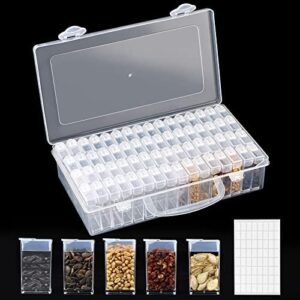As the seasons change and the days grow longer, it’s time to start thinking about how to maximize your harvest in the garden. Whether you’re a seasoned gardener or just getting started, there are plenty of tips and tricks to help you get the most out of your growing season.
One of the most important things to keep in mind when planning your garden is to work with the seasons. Different plants thrive in different conditions, so it’s important to pay attention to when certain vegetables and flowers are best suited for planting. For example, hearty vegetables like carrots and cabbage do best in the cooler months of spring and fall, while heat-loving plants like tomatoes and peppers thrive in the warm summer months.
When it comes to planting, spacing is key. Giving your plants enough room to grow and allowing for proper air circulation can make a big difference in the health and productivity of your garden. Be sure to follow the recommended spacing guidelines for each plant, and consider using companion planting techniques to maximize your space and deter pests.
Watering is another crucial aspect of a successful garden. Different plants have different water requirements, so it’s important to pay attention to the needs of each individual plant. In general, most vegetables and flowers require about 1-2 inches of water per week, either through rainfall or manual watering. Be sure to water in the early morning or late evening to minimize evaporation and give your plants the best chance for success.
Fertilizing is also important for a healthy garden. Adding compost or other organic matter to your soil can provide essential nutrients for your plants and help improve soil structure. You can also use organic fertilizers or specialized blends for specific plants to give them an extra boost. Just be sure to follow the instructions on the packaging and avoid over-fertilizing, as this can harm your plants.
It’s also helpful to pay attention to pests and diseases in your garden. Taking proactive measures, such as planting pest-repellent herbs or using natural insecticides, can help prevent infestations before they become a problem. Regularly inspecting your plants for signs of disease or pest damage and taking action early on can help protect your harvest and keep your garden thriving.
When it comes time to harvest, be sure to pick your vegetables and fruit at their peak ripeness for the best flavor and quality. Different plants have different indicators of ripeness, so be sure to do a little research beforehand to know when to harvest each crop. Additionally, be sure to properly store your harvest to extend its shelf life and enjoy the fruits of your labor for as long as possible.
As the season comes to an end, consider saving seeds from your favorite plants to replant next year. This not only saves you money on buying new seeds but also helps preserve heirloom varieties and promote biodiversity in your garden. Just be sure to properly store your seeds in a cool, dry place to keep them viable for future planting.
Overall, maximizing your harvest in the garden is all about being proactive, attentive, and patient. By following these tips and tricks, you can make the most of your growing season and enjoy a bountiful harvest year after year. So grab your gardening gloves and get started – your garden awaits!






